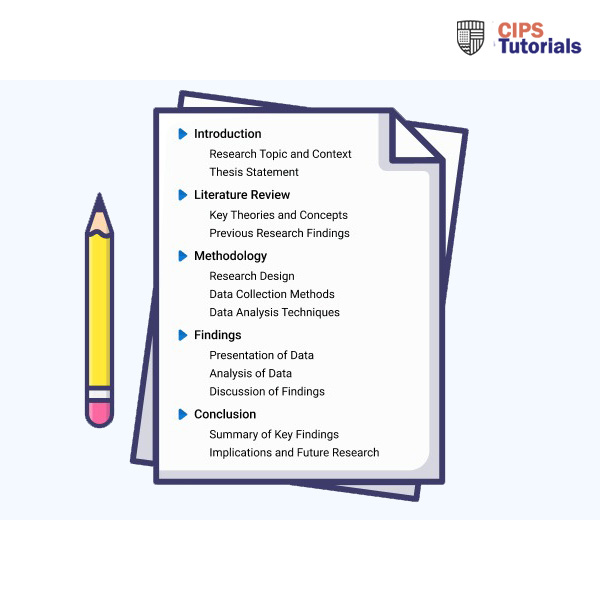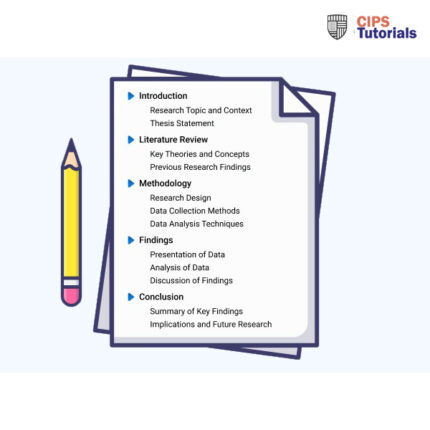-50%
Solution
SECTION ONE – QUESTIONS
| Analyse the external factors that drive the need for leadership and management within the organisation (AC 1.1)
Short references should be added into your narrative below. Please remember to only list your long references in the reference box provided at the end of this section. Word count: Approximately 430 words |
| Importance of Leadership and Management
In the highly competitive and demanding modern business environment, leadership and management has a critical role in an organisation. According to CIPD (2024), with the leadership assisting in ensuring the overall values and ethics of an organisation are adhered to. Further, Seidman et al. (2020) noted that 80% of organisations with successful leadership and management strategies benefit from increased profits and their markets dominance. External Factors Digital and Technological Changes In modern business environment, digital and technology changes are identified in CIPD (2020) as an enabler of working. This has had a direct influence on people working, increasing the demand for digital workplace skills, automation routines and non-routine tasks and noting on the people management skills essential for managing employees. Considering Highgate Optical, digital and technology changes would enhance the need to have a stronger leadership and management to guide the organisation in their operations. The rationale of this is informed by Pawar and Dhumal (2024) which identify emergence of data analytics and also AI as having significant implication on decisions making. For negatives, CNBC (2019) report note that digital and technological changes lead to upto 13% to more than 18% of employees turnover. To manage this, leadership and management must be in place to resolve the outcomes. Changing demographics Demographic changes represent the primary rationale for entities adapting their operations for responding to the increasing diversity in labour markets. According to Man and Man (2018) the demographical changes with more Millennials venturing workplace leads to influence on the broad organisation objectives. As such, the management must be there in High Gate Optical to restrategise objectives of offering the optical. Also, they influence the scope in which leaders guide the millennials and Generation Z through total rewards. The negatives of this include potential misunderstanding of High Gate optical leaders and managers with the employees particularly if they belong to different demographics. Economy Considering the report in ONS 2024), it highlight that in Quarter 1 of 2024, the economy increased with 0.7%. This is an increase from the previous economic performance of 0.6%. This present more opportunities for High Gate Optical venture and active operations. For High Gate Optical, having effective leadership and management is instrumental for appreciating the relevance of skills development. The negatives of this include cost intensive managing all the leadership and management requirements in High Gate Optical considering their current growth status.
|
| Explain the key differences between leadership and management roles and styles and the implications of each for organisational effectiveness. (AC 1.2)
Short references should be added into your narrative below. Please remember to only list your long references in the reference box provided at the end of this section. Word count: Approximately 480 words |
| Leadership and Management Roles
The different roles can be explained by use of Henri Fayol’s Administrative Management Theory (Edwards, 2018). They include; Management as Authority and Control– Considering the Henri Fayol Administrative Management Theory identifying the management as being mandated to exercise full and formal authority in their roles (Ali et al., 2021). In order to operate within a specified hierarchical order, a leverage on unity of command and hierarchically. Fayol theory is based on the assumption that in order for success in achieving an organisation set objectives, control is essential. A centralised decision making is also essential for ensuring consistent and adhering to set strategies. Leadership as Influence and Vision– The need for this role is to inspire an influence followers towards achievement of organisation goals. According to Uy et al. (2024), leaders are charismatic and inspiring and embracing intellectually simulation for motivation and empowered and motivated. Through the application of McGregor Burn’s Theory, leaders must be in a position to set the vision of others by clearly evidencing on their needs and what they aspire to become hence a common-based purpose. Visionally leadership is also identified to include articulation of a best future practice with people goals aligned by the leader to organisation broad objectives. Key Difference The management is involved in putting their emphasis to authority and control, enhancing order and efficient hierarchy while fully adhering to set legislations (Ali et al., 2021). The responsibility of leadership is to influence and inspire the rest to achieve a shared vision and empowerment of employees towards achievement of set goals. With the management enforcing ability to comply and complete assigned roles, leadership is a source of motivation and nurturing creativity, innovativeness and sustainable development. Impact on Organisation Effectiveness Management has an emphasis on authority and control hence an effective organisation. According to Afsar et al. (2020) effectiveness is anchored on appropriate resource allocation and use in achieving organisation objective. The negative impact of this include potential of over-relying with the control stifling innovativeness and hindering ability to be adaptable to change. For leadership, they influence and set vision which is inspiring to employees commitment, enhancing collaboration and innovativeness. The outcome of this include long-term organisation success. Balancing management control and leadership vision is essential to maximise organisation effectiveness and being agile (Ateş et al., 2020). Leadership and Management Styles The different styles are; Action-Centered Leadership– This is a 1973 model developed by Adair (Mohammadi, 2022) integrating various tasks, teams and people dimensions, managing assigned roles, cohesive teams and personal growth. According to the model, leadership has a responsibility of identifying assigned roles, delegating functions and offering support, set goals achievement with entire employees morale assured with capability effectively developed. Through the application of this leadership style, High Gate Optical would benefit from an enhanced dynamic strategy of leadership adapting their priority informed by situation at hand. According to Preston (2023), individual and team dynamics are appropriate managed for achieving organisation objectives. Behavioural Leadership– According to Benmira and Agboola (2021), the basic assumption of this theory is that there exist observable behaviours of leadership and their implication on followers productivity and satisfaction. The task-oriented behaviours entail well-structured functions (tasks), guiding others with relationship-based behaviours having an emphasis on rapport and support (Volpi & Polani, 2020). An organisation such as High Gate Optical leadership behaviours are influenced by prevailing situation integrating directive, supportive, participative and action-based behaviours. Key Differences Action-Centered Leadership put their emphasis on balanced task achievement, collaboration and personalised development. Conversely, Benmira and Agboola (2021) identify observable leadership behaviours grouped into the task-based and relationship-oriented and adaptation of styles informed by situations at hand for achievement of organisation goals and meeting the needs of followers. Impacts on Organisation Effectiveness Action-centered leadership and behavioural management enhance ability to achieve all assigned roles, collaboration and personalised growth hence organisation effectiveness (Mohammadi, 2022). These styles promote scope in which goals are achieved by pursuing appropriate leadership behaviours, adaptable to different situations and aligned to organisation objectives. In High Gate Optical, effectiveness would be achieved through an enhanced performance, satisfied teams and successful roles optimisation, managing different teams dynamics and personalised growth in varying cases.
|
| Compare the different knowledge, skills and behaviours required for leadership and management in organisations. (AC 1.3)
Short references should be added into your narrative below. Please remember to only list your long references in the reference box provided at the end of this section. Word count: Approximately 400 words |
| Knowledge in Leadership and Management
Knowledge for Leadership– One example of this is the emotional intelligence which is an essential knowledge for modern organisations leaders. For example, in High Gate Optical, this would include recognition and management of their emotions and their followers while navigating interpersonalised relations and inspiring team-based productivity (CIPD,2023). An appropriate theory which can support the necessity for this knowledge is Daniel Goleman’s Emotional Intelligence Theory. According to the theory, successful leaders have high-level emotional intelligence, enable their application for understanding and regulating emotions with emphasis to the rest (Williams, 2021). Knowledge for Management– An important knowledge required for the management is to understand different principles of organisation behaviour in line with McGregor’s Theory X and Theory Y (Touma, 2021). In line with this theory, managers believing with Theory Y assume an inherent motivation and capability amongst the employees, fostering participation and empowerment of the management styles hence success in their operations. The emotional intelligence and organisation behaviour is core for leaders and managers success in their operations. Their target is enhancing success despite being in varying dimensions (Supramaniam & Singaravelloo, 2021). The priority of emotional intelligence is interpersonalised skills with self-awareness essential for successful leaders. The appreciation of organisation behaviours prioritise on motivation and empowerment of employees for successful management strategies. Skills for Leadership and Management Skills for leadership– An essential skill for the leadership include problem solving informed by Mumford’s Skill-Based Model (Ali et al., 2021). The basic assumption of the theory is that successful leaders have problem-solving skills facilitating an analysis of hard phenomenon and holistic decision making. Through an active problem solving, innovation is facilitated, adapt well and successful leadership in different situations. Skills for Management– An important skill which need to be possessed by the management is change management. In line with Kotter’s 8 Phases Model (Trawick & Carraher, 2023), successful managers must be in a position of adapting to change, guiding their organisations in transition process, inspire urgency, build coalitions and ensure sustainable change. The skills for solving problems by leaders enhance leaders ability to navigate towards complex occurrences, innovativeness, and guiding success in making decisions. Conversely, change management skill for management is identified in Kotter’s model as empowering management in guiding organisation change process, adaptability and sustainable success in dynamic business environment. Bahaviours for Leadership and Management Behaviours for leadership– A critical behaviour for the leadership is transformational leadership as evidenced in Bass Transformational Leadership Theory (Ladkin & Patrick, 2022). In line with the theory findings, leaders who demonstrate transformational behaviours are a source of inspiration and motivation to their followers in articulation of compelling vision, innovativeness and empowerment of all individuals for realisation of their optimum capability. The outcome of this is successful change embrace and development (Zia, 2020). Behaviour for Management– An important behaviour which is essential for management is task-oriented behaviour of leadership (Ladkin & Patrick, 2022). It details the management as demonstrating task-based behaviours prioritising on structured functions, goals setting and guiding subordinates for ensuring they complete their assigned roles. The outcome of this is increased performance and organisation success in achievement of set goals. Behaviour of transformational leadership in line with Bass Model (Ladkin & Patrick, 2022) is anchored on offering an inspiration to followers by prioritising on vision, innovativeness and empowerment while enhancing organisation change. Conversely, for task-oriented behaviour for management, this have an emphasis on structuring tasked in High Gate organisation and ensuring performance increase and success in their business environment (optical selling).
|
| Evaluate the different concepts and range of approaches that are available for effective leadership and management development. (AC 2.2)
Short references should be added into your narrative below. Please remember to only list your long references in the reference box provided at the end of this section. Word count: Approximately 500 words |
Please click the following icon to access this assessment in full

